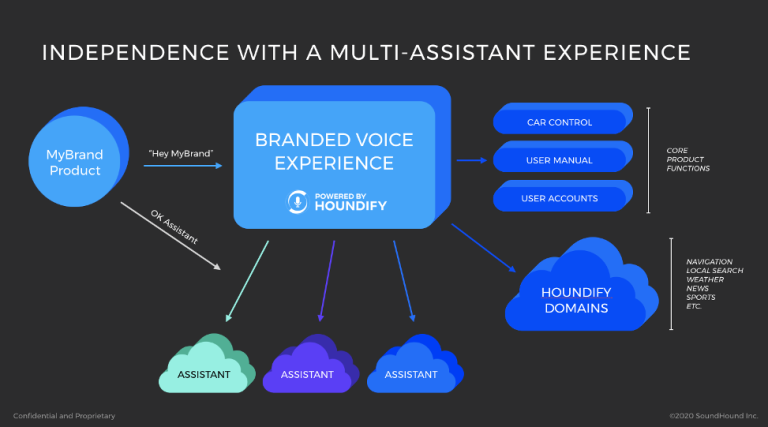By: Mike Zagorsek
Every day more companies are realizing that succeeding as an independent voice assistant extends far beyond the voice AI platform itself. Product and brand sovereignty depend on the ability of content providers and IoT product manufacturers to remain autonomous when implementing a voice-first strategy for their products and services.
Brand independence requires self-governance over the domains specific to their users and that the brands are never wholly dependent on any one entity to exist. Truly independent brands are untethered to any single technology or business platform, allowing for better adaptation to changing circumstances and for more control over the customer relationship.
Conversely, organizations that are dependent on third party platforms are made vulnerable when a key environmental condition change causes investment in business and knowledge to become irrelevant.
Let’s take a look at what happens when a company becomes too reliant on a single technology platform.
A business case for platform independence
Netflix vs. Blockbuster Video
Blockbuster was delivering entertainment to an audience that wanted to sit at home and not go to the movies. The company saw a need and filled it by allowing people to watch movies at home and to view those no longer available in theaters. While the service was very popular for a time, the inconvenience of going to the Blockbuster location resulted in the company collecting enough late fees to make late fee collection its greatest source of revenue. Although profitable, what they didn’t consider was the customer experience. While late fees drive profitability, the customer is not delighted — to say the least.
It wasn’t long before Blockbuster had a business rival that understood the importance of knowing your customer and serving their unique needs. When they came on the scene, Netflix understood the market and the changing ways in which people were watching movies. They also understood the annoyance of driving to brick and mortar locations. Netflix filled the gap by providing a service where late fees were no longer an issue for the customer. Prepaid mail delivery and returns made receiving and sending movies, on time, a convenient and seamless experience.
In addition, Netflix offered their services as a subscription. One monthly fee, all the movies you could order, watch, and return.
When Netflix started cannibalizing Blockbuster’s market, Blockbuster responded by offering a subscription program, but they were too late. Netflix had already established dominance as the movie subscription provider, and the company was already moving to the next level. By staying abreast of industry trends, Netflix was able to start delivering their content through streaming services, eliminating the need to order and return physical discs.
Netflix was able to survive and dominate the market because its services were not dependent on physical media. Why? Because they knew that was not the business they were in. They were in the content delivery business — regardless of the platform. Today, Netflix is creating their own content and competing with the content providers they originally relied on for their revenue.










